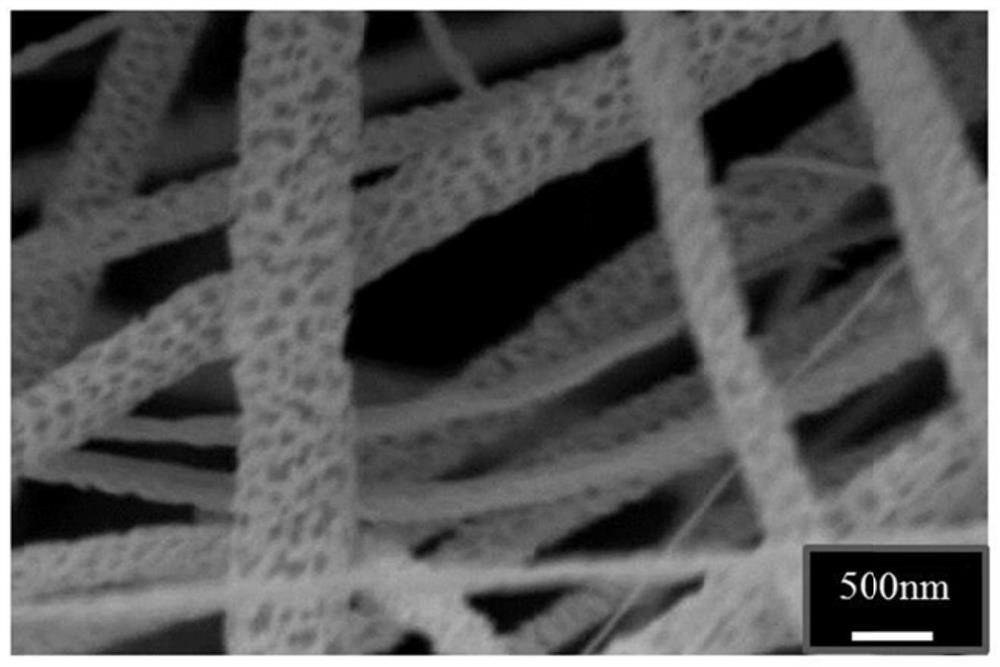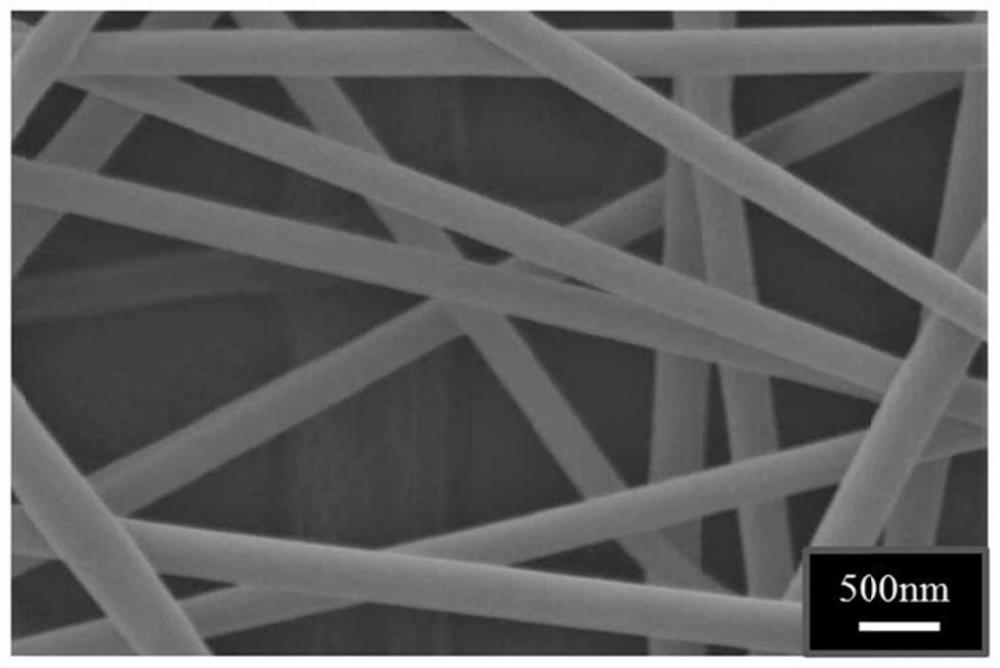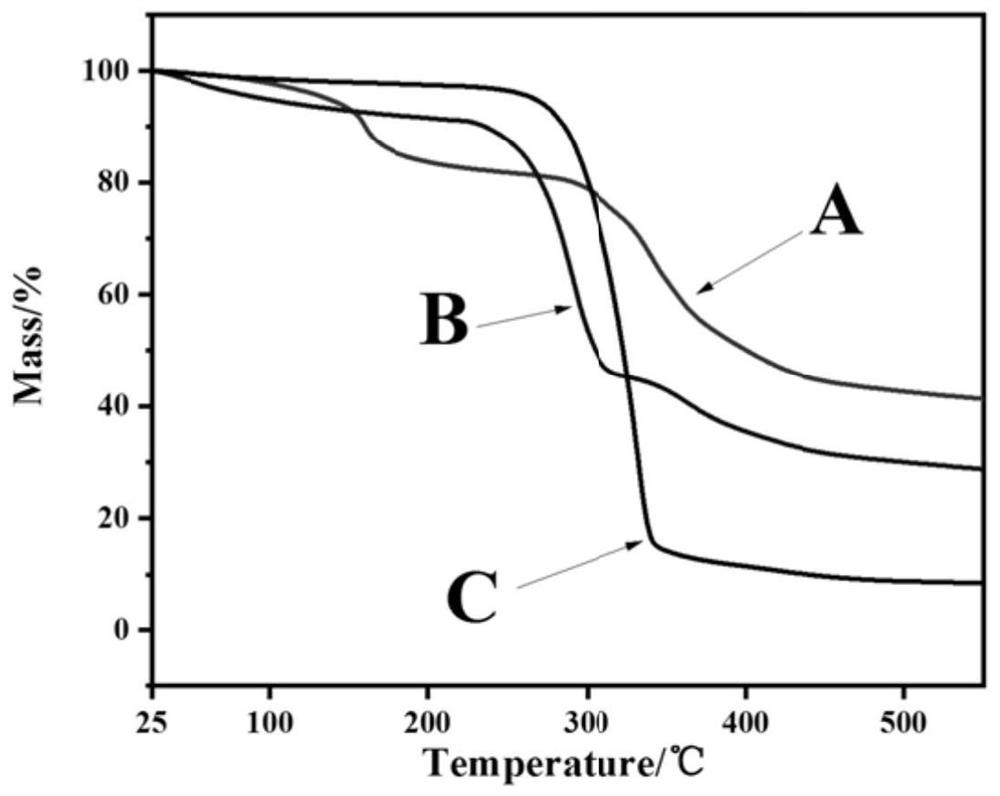Fibroin polylactic acid porous nanofiber composite material as well as preparation method and application thereof
A nanofiber and composite material technology, applied in silk fiber production, fiber processing, hollow filament manufacturing, etc., can solve the problems of uneven separation of nanofibers, inability to achieve single fiber surface structure, improvement, etc. Specific surface area and roughness, favorable adhesion and proliferation, short production cycle effects
- Summary
- Abstract
- Description
- Claims
- Application Information
AI Technical Summary
Problems solved by technology
Method used
Image
Examples
Embodiment 1
[0043] 1. Set the temperature at 25°C and the humidity at 30% RH. After removing the pupae and impurities from the silkworm cocoon, cut the cocoon shell into pieces.
[0044] 2. Weigh 5g of shredded silkworm cocoons, put them into 2L of 0.21wt% sodium bicarbonate boiling aqueous solution for degumming treatment for 30min, wash them repeatedly with deionized water for 3 times, and then move them to a ventilated place to dry naturally. Degummed silkworm silk can be obtained.
[0045] 3. Configure a calcium chloride-formic acid solution with a calcium chloride concentration of 4wt%, weigh 23g of the solution, place it in a 50mL centrifuge tube, and then add 2g of degummed silkworm silk to the solution for dissolution in stages to obtain the mass Fraction 8% silkworm silk protein solution.
[0046] 4. Filter the silkworm silk protein solution with a PTFE microporous filter membrane with a pore size of 0.45 μm, and collect the filtrate in a new centrifuge tube for subsequent use. ...
Embodiment 2
[0078] 1. Set the temperature at 20°C and the humidity at 15% RH. After removing the pupa and impurities from the silkworm cocoon, cut the cocoon shell into pieces.
[0079] 2. Weigh 5g of shredded silkworm cocoons, put them into 2L of 0.21wt% sodium bicarbonate boiling aqueous solution for degumming treatment for 40min, wash them repeatedly with deionized water for 3 times, and then move them to a ventilated place to dry naturally. Degummed silkworm silk can be obtained.
[0080] 3. Prepare a calcium chloride-formic acid solution with a calcium chloride concentration of 2wt%, weigh 20g of the solution, place it in a 50mL centrifuge tube, and then dissolve 0.2g of degummed silkworm silk in the solution to obtain the mass fraction 1% silkworm silk protein solution.
[0081] 4. Filter the silkworm silk protein solution with a PTFE microporous filter membrane with a pore size of 0.45 μm, and collect the filtrate in a new centrifuge tube for subsequent use.
[0082] 5. Weigh 0.2...
Embodiment 3
[0086] 1. Set the temperature at 35°C and the humidity at 40% RH. After removing the pupa and impurities from the silkworm cocoon, cut the cocoon shell into pieces.
[0087] 2. Weigh 5g of shredded silkworm cocoons, put them into 2L of 0.21wt% sodium bicarbonate boiling aqueous solution for degumming treatment for 40min, wash them repeatedly with deionized water for 3 times, and then move them to a ventilated place to dry naturally. Degummed silkworm silk can be obtained.
[0088] 3. Configure a calcium chloride-formic acid solution with a calcium chloride concentration of 35 wt%, weigh 30 g of the solution, place it in a 50 mL centrifuge tube, and then dissolve 5 g of degummed silkworm silk in the solution to obtain a mass fraction of 16.7 % silkworm silk protein solution.
[0089] 4. Filter the silkworm silk protein solution with a PTFE microporous filter membrane with a pore size of 2 μm, and collect the filtrate in a new centrifuge tube for subsequent use.
[0090] 5. We...
PUM
 Login to View More
Login to View More Abstract
Description
Claims
Application Information
 Login to View More
Login to View More - R&D Engineer
- R&D Manager
- IP Professional
- Industry Leading Data Capabilities
- Powerful AI technology
- Patent DNA Extraction
Browse by: Latest US Patents, China's latest patents, Technical Efficacy Thesaurus, Application Domain, Technology Topic, Popular Technical Reports.
© 2024 PatSnap. All rights reserved.Legal|Privacy policy|Modern Slavery Act Transparency Statement|Sitemap|About US| Contact US: help@patsnap.com










